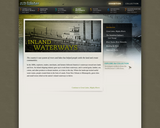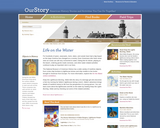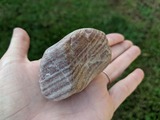
Students will learn about life on the coast of North Carolina and the various aspects of the culture of the people who grew up there.
- Provider:
- NCPEDIA
- Author:
- Karen Willis Amspacher
- Date Added:
- 06/24/2019

Students will learn about life on the coast of North Carolina and the various aspects of the culture of the people who grew up there.

For this activity, students research an North Carolina industry and present their findings to their classmates.

In this resource, students can learn about the impact of fishing and fishing communities through out the United States. This site is connected with the Smithsonian Museum.

In this unit, students will explore their neighboring surroundings while learning about the natural resources that are available in their own backyard, as well as positive contributions they can make to minimize negative change in the environment. Furthermore, students will utilize technological resources to broaden their understanding on environmental changes, as well as human and animal adaptation. Additionally, they will gain knowledge through different literature resources during independent and shared reading.

This lesson introduces students to ideas on how they can make the world a more beautiful place. Students will discuss trash vs. recycling, decomposition rates of various items, and how to refuse and choose alternatives to single-use items. This lesson was developed by Lee Ann Smith as part of their completion of the North Carolina Global Educator Digital Badge program. This lesson plan has been vetted at the local and state level for standards alignment, Global Education focus, and content accuracy.

In this resource, students can learn about different waterways which were constructed during the 19th Century in the United States. This resource is connected with the Smithsonian Museums.

Children and adults can enjoy exploring lighthouses and the maritime history of the United States together through children's literature, everyday objects, and hands-on activities

In this lesson, students identify the Eastern Tiger Swallowtail as the official butterfly of the state of North Carolina and explain the historical connection of the Eastern Tiger Swallowtail with the early North Carolina colony.

In this virtual resource, students will observe rocks in their own schoolyard and take a virtual field trip to Spencer Mountain, learning from a local historian and geologist about the natural and human history of the landform.
The wakelet site features videos demonstrating hands-on activities for students to complete at school in small, socially-distanced settings. Activities may also be adapted for at-home learning. Some activities incorporate an outdoor component, acknowledging the need to balance screen time with green time to support mental health. Tips for taking your students outside can be found here: https://education.eol.org/cnc_materials/TipsForTeachingOutside.pdf

Students will locate, explore, and photograph evidence of maritime activities affecting them and/or their community, write a detailed description about the effect of the activities, and share both photographs and descriptions online.

Students will learn about Lunsord Lane and the accomplishments he had a a slave and a freed black man.